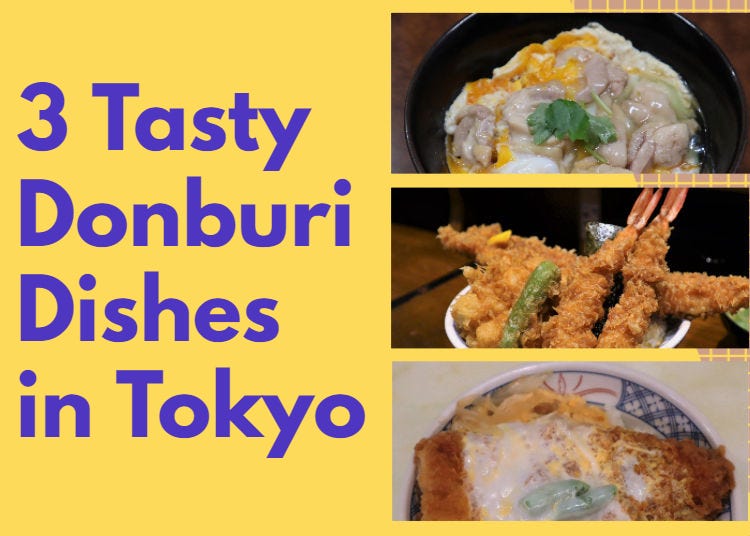
3 Tasty Donburi Dishes in Tokyo: Recommendations from a Japanese Food Expert
- Written by: Miyu Shimada
Gotochi Gurume refers to unique dishes made with ingredients or special cooking methods from specific regions. Even the representative Japanese food, donburi (rice bowls with various toppings), sees variations depending on what region in Japan you’re in! These unique regional rice bowls are called gotochi donburi.
We were able to get some recommendations from Ms. Ito, a donburi expert who is active in spreading Japanese donburi culture to the world. With her help, we will introduce restaurants in Tokyo that offer delicious donburi dishes!
Tonkatsu Akebono in Yurakucho: Enjoy a Popular Traditional Katsudon Dish
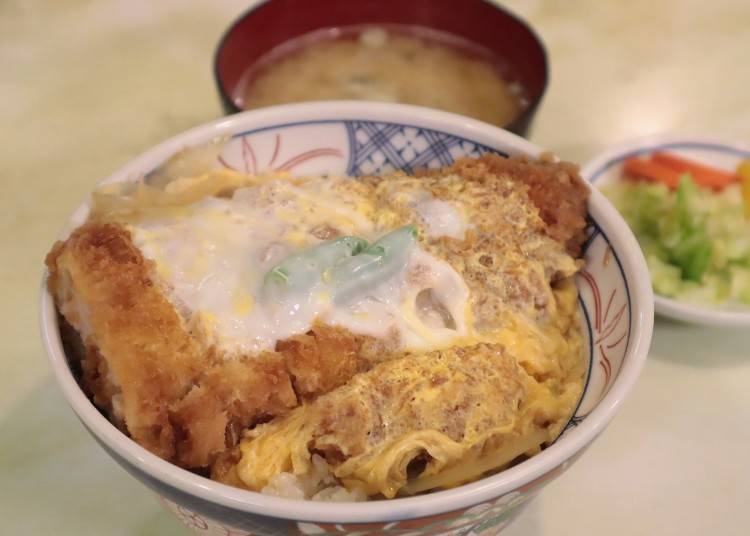
According to Ms. Don Ito: “Katsudon, which is a pork cutlet donburi, is actually a donburi dish that has strong gotochi gurume characteristics.
Many people think that adding an egg on top is a standard way of making this dish, but it’s actually a cooking method specific to Tokyo. Many areas, such as the Chubu region’s Nagano Prefecture as well as the Hokuriku region, don’t add an egg.
Other subtle differences include whether the pork cutlet is covered in panko bread crumbs or not and whether the dish is served with or without a bed of cabbage.
A restaurant where you can try a standard Tokyo-style katsudon is Tonkatsu Akebono. The prices here are very reasonable!”
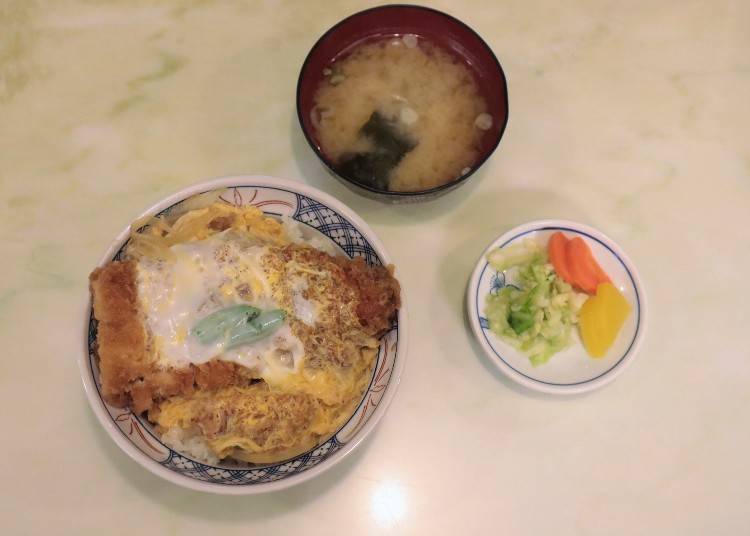
This is Tonkatsu Akebono’s katsudon. The meal also comes with miso soup and oshinko - various pickled vegetables.
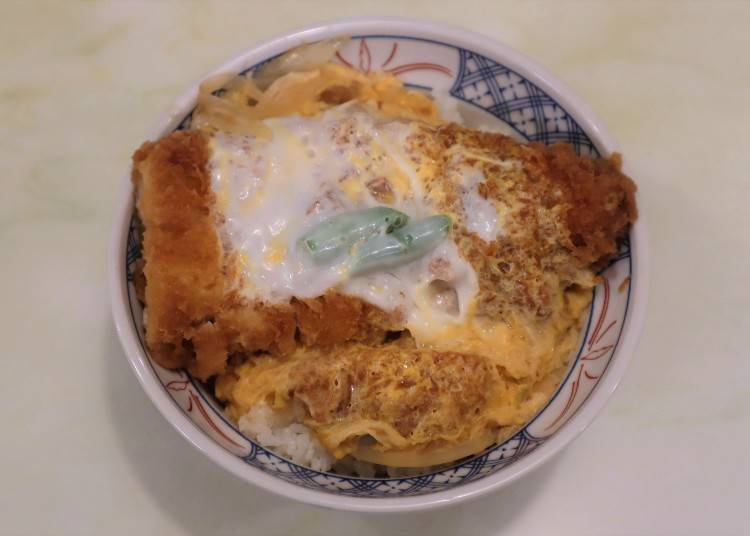
Made with a large piece of pork cutlet, onions, and eggs, this is the standard Tokyo-style katsudon you’ve been waiting for!
The first bite must be out of the fresh and hot, fried pork cutlet! The cutlet keeps its crispiness even when covered in generous amounts of egg and sauce. What’s more, a great aspect of this pork loin cutlet is that it’s not too fatty. Using thick and tender pork, this donburi dish is guaranteed to leave you full and satisfied!

The best part about this katsudon is that you get to take turns eating the sauce-soaked tonkatsu and the tasty rice underneath. Plus, the green beans on top act as a great garnish and topping with their crunchy texture. (Depending on the season, there may be a change in toppings to other greens such as snow peas, etc.)

Akebono is a long-standing restaurant that was established in 1962. You can find it conveniently inside the Tokyo Kotsu Kaikan building located right in front of Yurakucho Station, a bustling business hub where many office workers tend to frequent.
The shop’s retro signs and interior design enable you to feel its long history and enjoy a casual atmosphere. Although it doesn’t have an English menu, there’s no need to worry!
The staff here are used to using various methods of communication such as body language and writing. Also, the owner cherishes communicating with all customers, so be prepared for a warm welcome!
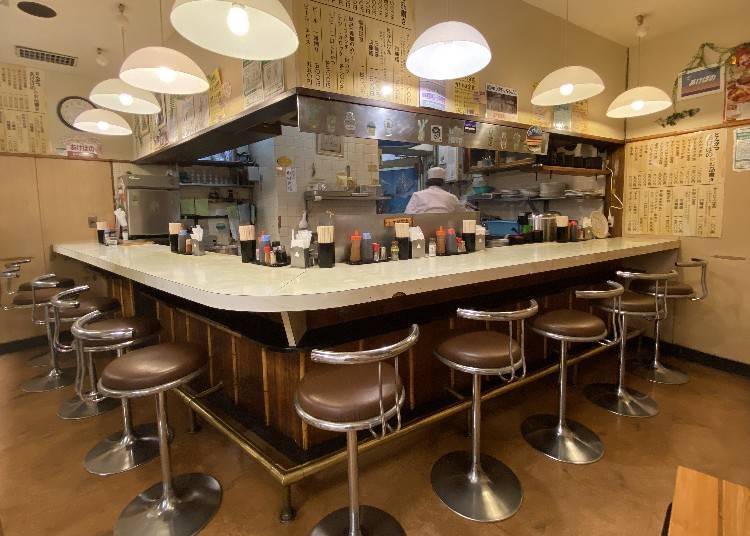
Adding to the traditional Japanese atmosphere are the counter seats where you get a view of how the food is prepared! What’s more, here you can experience an old-fashioned, casual dining style and service that so many Japanese people love. Receiving such service while enjoying delicious katsudon is sure to satisfy both the stomach and the soul!

- Health & Safety Measures
- ・Indoor disinfection measures taken
・Sanitizer installed
・Disinfected after each guest leaves
・Ventilation measures in place
・Coin trays used
・Staff wear masks, gargle, wash hands regularly, and monitor body temperature
・Limited capacity/increased space between seats
・Entry declined to anyone who is feeling unwell
・Guests are required to wear masks
-
Tonkatsu Akebonoとんかつ あけぼの
- Address B1F, Tokyo Kotsu Kaikan, 2-10-1, Yurakucho, Chiyoda Ku, Tokyo, 100-0006
- Phone Number 03-3211-3934
・Hours: Monday, Tuesday, Thursday, Friday (Lunch) 11:00 a.m.~3:00 p.m. (Dinner) 5:30 p.m.~8:00 p.m./Wednesday (Lunch) 11:00 a.m.~3:00 p.m. only
*The shop may close early if they’ve used up all the rice for the day. Also, make sure to call beforehand when planning to visit close to closing time.
・Closed: Saturday (Irregular), Sunday, Holidays
Kaneko Hannosuke in Nihonbashi: Edomae Tendon from a Tendon Specialty Shop!
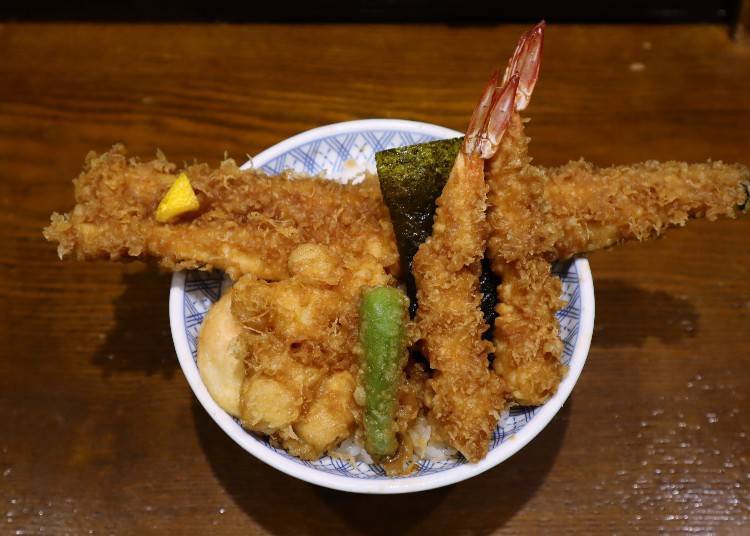
A place to go for Edomae Tendon (a tempura donburi), is Kaneko Hannosuke. Edomae refers to a cooking style created in the Edo period where freshly caught ingredients, from what is now known to be Tokyo Bay, were fried in sesame oil.
This restaurant has protected and kept this traditional cooking method alive. On top of filling their bowls with delicious fried tempura, Kaneko Hannosuke serves gari-pickled ginger, as a hashi yasume*. This allows you to fully enjoy all the flavors of your meal until the very end!
(*Hashi Yasume: small dishes in Japanese cuisine prepared as a palate cleanser to eat between meals.)
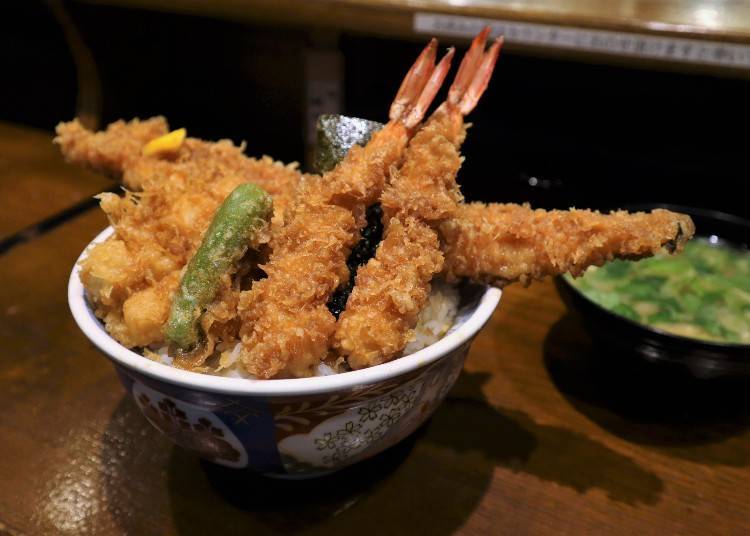
Shown in the photo above is the Edomae Tendon. Kaneko Hannosuke’s theme for this dish is sophisticated and extravagant.
Made with the hopes that their dishes will contribute to the happiness of as many people as possible, the restaurant decided to offer this hearty donburi at a reasonable price. The price of 980 yen for a donburi with so many toppings is absolutely shocking!

A very popular and delicious piece of tempura in this donburi is the conger eel tempura! The fresh conger eel prepared at this restaurant is extremely tender and is covered in a crispy breading. For any foreign visitors who have never tried conger eel tempura, it’s a must-try! You’ll finish this voluminous but delectable dish in no time!
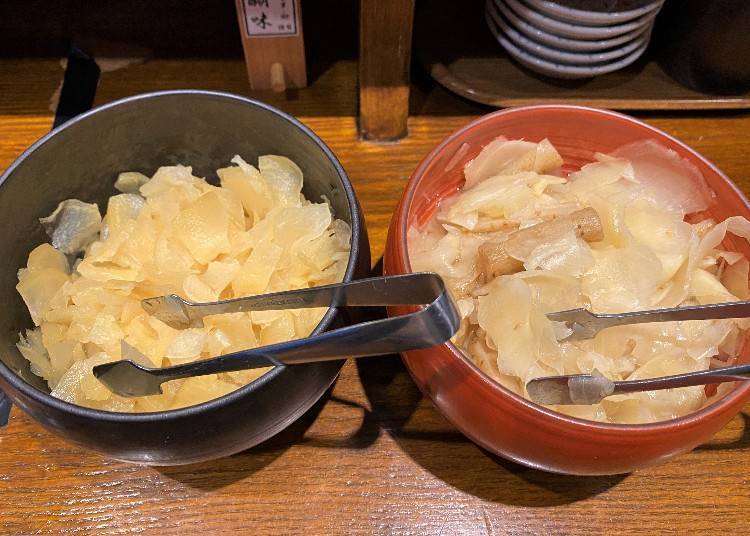
Palate cleansers include iburi takuan (smoked pickled radish) and gari-gobou (pickled ginger and burdock). Your rice will disappear quickly when eating these dishes in-between bites of your tendon!
A dish that’s hard to find abroad is the soft-boiled egg tempura! Offering a rich and runny egg yolk, this tempura dish is a rare find even in Japan. It pairs perfectly with the shop’s secret sauce, so please try enjoying it by mixing the egg into the sauce-covered rice.

We recommend using this how-to-eat tendon guide available both in English and Chinese.
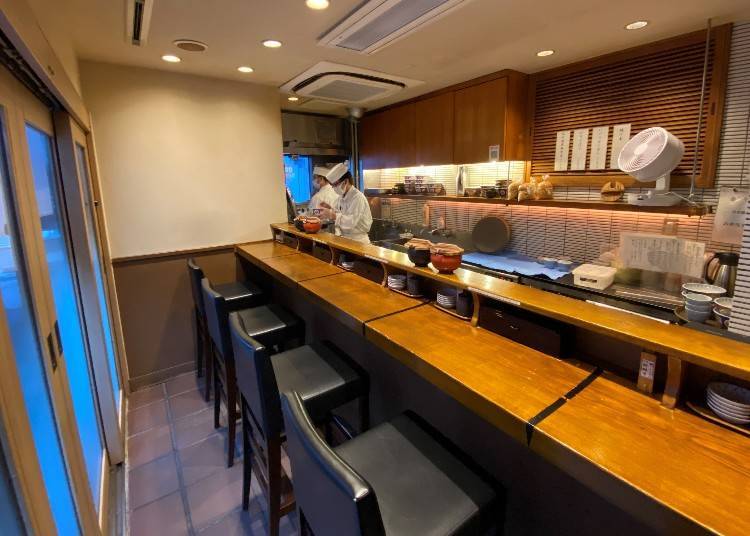
Kaneko Hannosuke is spreading the authentic and delicious taste of Japanese food with their restaurants overseas and throughout Japan.
In order to offer the same flavors at every restaurant, they pull from their expertise, including where to source their food and how to pass their techniques onto new chefs, etc.
Although any Kaneko Hannosuke restaurant you go to will be amazing, we especially recommend visiting the main shop. Here you get the special experience of getting to dine where this restaurant’s journey began while simultaneously enjoying the atmosphere of the surrounding area during your wait in line.
Known as a soul food dish from the Edo period, Edomae Tendon is a must-try during your visit to Tokyo!
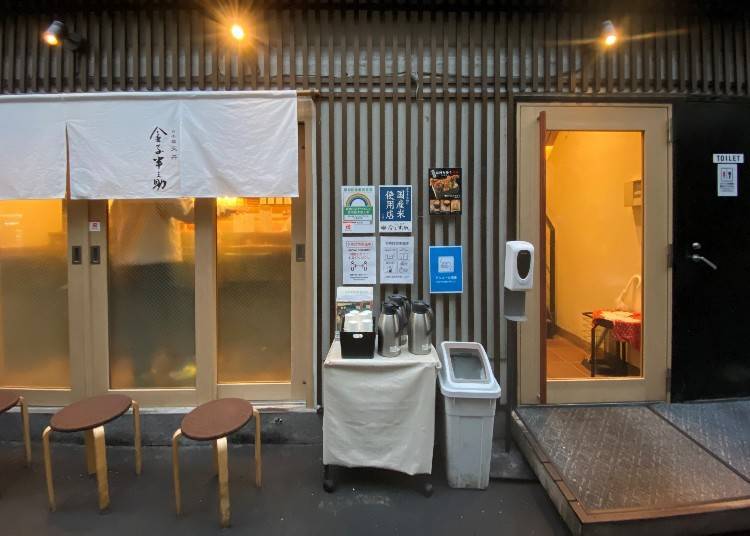
- Health & Safety Measures
- ・Indoor disinfection measures taken
・Sanitizer installed
・Disinfected after each guest leaves
・Ventilation measures in place
・Coin trays used
・Plastic partitions installed
・Staff wear masks, gargle, wash hands regularly, and monitor body temperature
・Limited capacity/increased space between seats
・Entry declined to anyone who is feeling unwell
・Guests are required to wear masks
・Guests’ temperatures are checked
-
Nihombashi Tendon Kanekohannosuke日本橋 天丼 金子半之助
- Address 1-11-15, Nihombashimuromachi, Chuo Ku, Tokyo, 103-0022
- Phone Number 03-3243-0707
・Hours: Monday through Friday 11:00 a.m.~10:00 p.m./Saturday, Sunday, and Holidays 10:00 a.m.~9:00 p.m. (Last orders are 30 minutes before closing).
・Closed: Irregular holidays
Torimeshi Toritoh Bunten in Tsukiji: A Unique Shio Oyakodon Only Available at this Chicken Shop!
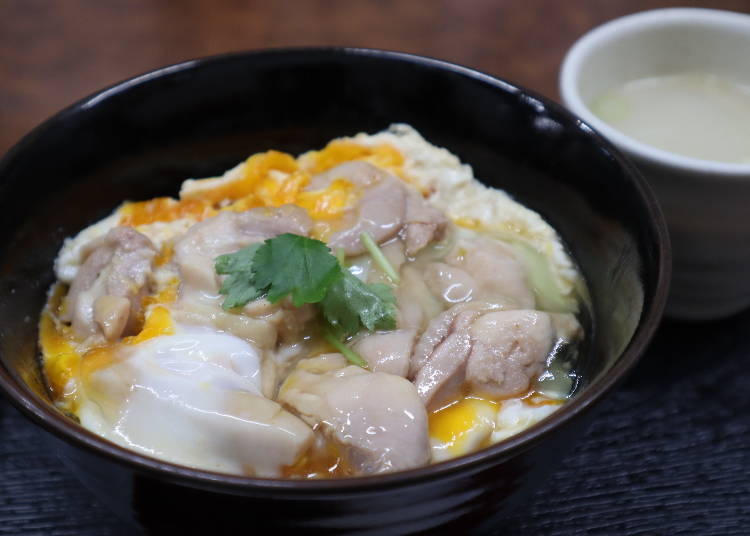
According to Ms. Don Ito: “A standard oyakodon-chicken and egg donburi, usually has a sweet, soy sauce-based sauce. However, the oyakodon I want to recommend is a salt-based variety. You can try this scrumptious donburi at Torimeshi Toritoh Bunten - a traditional chicken specialty shop that has been up and running in Tokyo’s Tsukiji district for over 100 years.
The dish offered at this shop is one that can’t be made unless you’re confident in your skills and how fresh your chicken is.
If you’re lucky, you might even visit when the shop is offering their reasonably-priced Tokyo Shamo (a rare and tasty brand of chicken from Tokyo) oyakodon!”
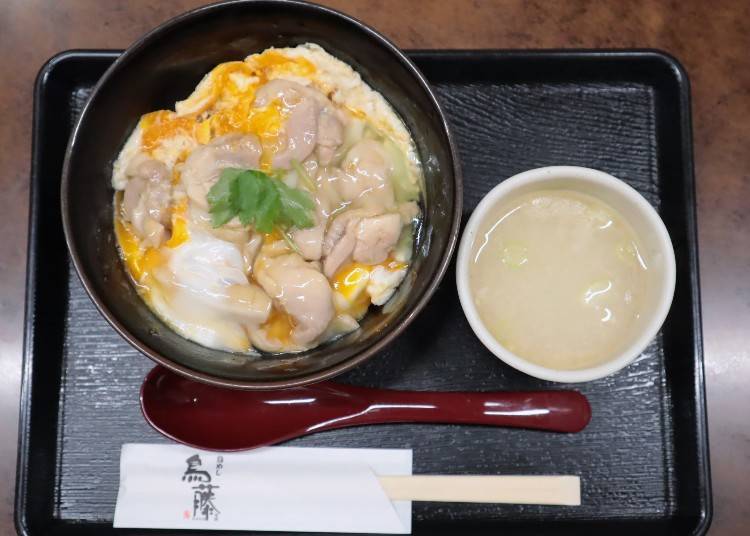
Toritoh’s Oyakakodon Shio comes with a tori paitan (a white and creamy chicken broth), made from chicken that has been stewed for a whole day! This incredible soup is very creamy and filled with incredible umami flavors from the chicken. It’s even used as a broth for the oyakodon dish!
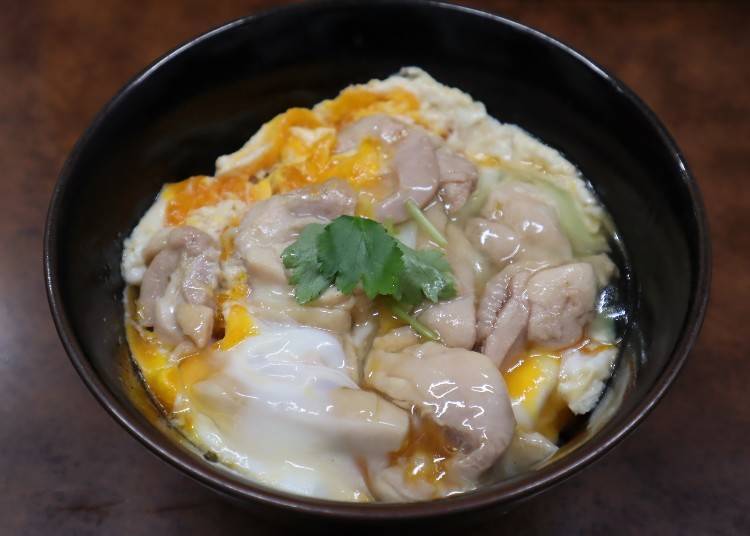
Since the broth is salt-based, the entire dish is white with some hints of yellow from the egg. This makes for a beautiful contrast in color. The fresh chicken simmers in the creamy paitan soup, and eggs are cooked so that they still have a slight runniness to them. The technique needed to make such an oyakodon takes years of practice!

The melty texture of the eggs wrapping around the rice, as well as the chicken boiled in a carefully made broth, hits your palate with a burst of flavor! Because it’s seasoned simply, you can truly appreciate how delicious the natural flavors of the chicken are.
This is a hard dish to pull off unless you’re confident in the quality of the ingredients you’re using. It’s said that once you try the salt-based oyakodon, it’s hard to go back to the standard soy sauce-based donburi. This has resulted in many becoming regulars at Toritoh. It’s an experience you’ll only understand once you try this special oyakodon!
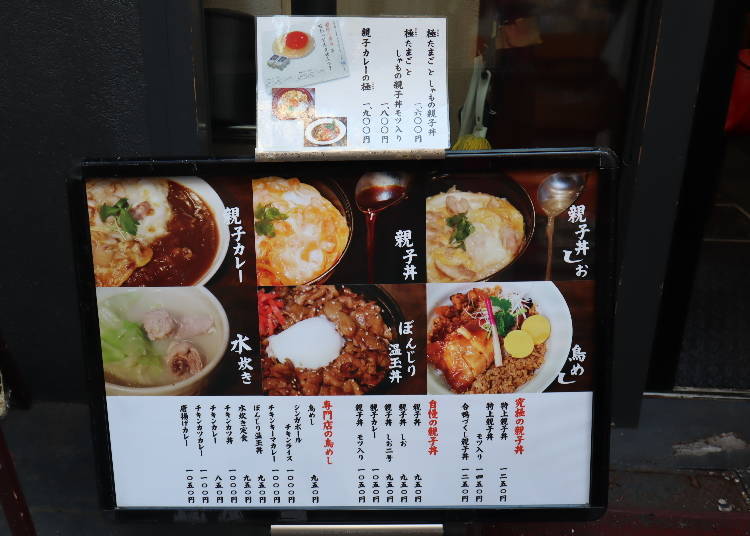
Additionally, the Tokujo Oyokadon (1,250 yen), which uses the Shamo breed of chicken, is also a recommended dish. A characteristic of Shamo chicken is that it has a firm texture and a strong umami flavor.
Even though this breed is found anywhere throughout Japan, you might even be able to delight in a dish made from the rarer Tokyo Shamo variety, depending on the period you go. The only reason you can eat these dishes at such a reasonable price is that they are served at this wholesale chicken specialty shop.
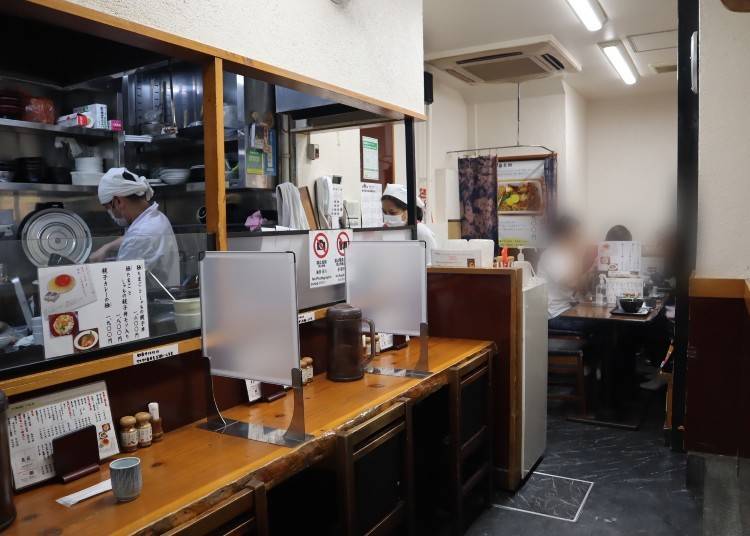
Toritoh was established in 1907. Located in Tokyo’s Tsukiji district, it’s a shop with a history of selling high-quality chicken and duck to chefs. Furthermore, Torimeshi Toritoh Bunten is the chicken shop’s first restaurant.
Here, oyakodon and chicken bento boxes are sold with the intent to spread the delicious taste of chicken to more people.
Tsukiji Market has a long history of playing an important role in Tokyo’s food culture. Although shops inside Tsukiji Market have now moved to the new Toyosu Market, shops that were originally outside the facility - in the Tsukiji Outer Market - have remained. Toritoh’s Oyakodon Shio is a must-try dish that has gotten the seal of approval from many professional chefs.

- Health & Safety Measures
- ・Indoor disinfection measures taken
・Sanitizer installed
・Disinfected after each guest leaves
・Ventilation measures in place
・Coin trays used
・Plastic partitions installed
・Staff wear masks, gargle, wash hands regularly, and monitor body temperature
・Limited capacity/increased space between seats
・Entry declined to anyone who is feeling unwell
・Guests are required to wear masks
・Guests’ temperatures are checked
-
Torimeshi Toritoh Bunten鳥めし 鳥藤 分店
- Address 4-8-6, Tsukiji, Chuo Ku, Tokyo, 104-0045
- Phone Number 03-3543-6525
・Hours: 7:30 a.m.~2:00 p.m.
・Closed: Sunday, Holidays, Days when the market is closed.
All three of the shops and donburi dishes introduced are representative of Tokyo. It might be nice to try one dish per day for lunch and dinner, or, for those who are up to the challenge, visit all three restaurants at once!
Each of the dishes has a different flavor profile that enables you to experience the depth of donburi. Enjoy trying katsudon, tendon, and oyakodon!
About our Interviewee
-
 Ms. Don Ito
Ms. Don Ito
While working as a company employee, she has been serving as a director of All Japan Donburi Union, an association established in 2014 to organize donburi fans and revitalize local communities through rice bowls. She has eaten over 600 kinds of donburi, mainly in Tokyo.
*All Japan Donburi Union (http://don.or.jp/)
An organization of donburi lovers from all over Japan, which exchanges information on rice bowls on Facebook and organizes the annual Don Grand Prix to promote donburi and develop the donburi industry.
*The information in this article is from November 2021.
*Due to the spread of Covid-19, shops may make changes to the hours and services available as well as close temporarily. For details, please refer to each official website or social media account.
Miyu is a travel writer and tour conductor with over a decade of experience in developing educational content for working individuals. She has a passion for exploring new cultures and has visited more than 150 cities in around 50 countries. Her goal is to sample great food, experience nature, enjoy historical sites, and bathe in hot springs around the world. Miyu left her corporate job to pursue her passion for travel and now spends over 100 days a year abroad while working as a writer. She promotes the joy of travel, the beauty of Japan, and the diverse cultures of the world by traveling to different parts of Japan and collaborating with inbound tour operators and fellow travel writers.
- Area
- Category
*Prices and options mentioned are subject to change.
*Unless stated otherwise, all prices include tax.
Popular Tours & Activitiess
Recommended places for you
-

Ueno Zoo (Ueno Zoological Gardens)
Zoos, Aquariums & Botanical Gardens
Ueno
-

Wasui Yaesuten
Other Japanese Food
Tokyo Station
-

wagyuutokome Nakatake
Other Japanese Food
Ginza
-

MomotaroUeno
Other Japanese Food
Ueno
-

Kappabashi Street
Old Towns (Shitamachi)
Asakusa
-

Ameyoko Shopping Street
Old Towns (Shitamachi)
Ueno
-
Ad

Just 2 Hours from Tokyo! Enjoy Ibaraki’s Breathtaking Ocean Views, Flowers & Autumn Leaves on Private Tours
-
Ad

Get Your Perfect Custom Suit at GINZA Global Style PREMIUM Ginza Honten: Choose from 5,000 Fabrics, Starting at 26,400 Yen (incl. tax)!
-

(12% OFF KKday Coupon) Mt. Fuji Autumn Leaves, Powder Snow & More! 15 Best Tours to Experience Japan in Fall & Winter
-
Ad

Ohta’s Isan Gets a Refresh: Introducing the New Ohta’s Isan S and Ohta’s Isan <Sachet> S with Updated Packaging and Improved Benefits
-
Ad

Okinawa Travel Troubles? Guide to the MCC Hotline for Illness and Weather Emergencies
-

10 Must-Buy Cosmetics at Don Quijote (2025 Edition)
Inspiration for Accommodations
-

Enjoy Mt. Fuji from the Comfort of Your Room! Recommended Ryokan with Mt. Fuji View
-

Stay Near the Cherry Blossoms! Hotels for Cherry Blossom Viewing in Tokyo
-

Family-Friendly Hotels with Free Shuttle to Disneyland: Convenient Access for a Magical Stay
-

Top Ranked Hakone Hotels with Mt. Fuji View: Enjoy Stunning Scenery from Your Private Space
-

Convenient Tokyo Hotels with Airport Shuttle: Ideal for Families and Heavy Luggage
-

Stunning Tokyo Tower View Hotels: Enjoy Spectacular Scenery from Your Private Space
-

Convenient Asakusa Hotels with Kitchens: Ideal for Extended Family Visits
-

Experience Luxury: Hakone's 10 Best Five-Star Accommodations
-

Enjoy Mt. Fuji Autumn Leaves! Top Hotels Near the Popular Autumn Leaves Corridor
-

Experience Hakone Fall Foliage from Your Room with Stunning Views
-

Kichijoji – Explore Tokyo’s Top-Rated Stylish Suburb in Half a Day!
-

38 Foreign Visitors Share Their Favorite Japanese Foods (+Ones They Recommend Against)
-

Canned Food Mania: Taste Testing 5 of Japan’s Most Popular Offerings
by: Matt Vachon
-

[MOVIE] Experience the Tokyo Dessert Heaven with Grilled Sweet Dumplings and Water Cake at Mikan Club!
by: Devan Jean
-

6 Fun Things to Do at Tokyo's World-Famous Tsukiji Outer Market!
-

11 Japanese Regional Food Souvenirs You Have To Try!
- #best ramen tokyo
- #what to buy in ameyoko
- #what to bring to japan
- #new years in tokyo
- #best izakaya shinjuku
- #things to do tokyo
- #japanese nail trends
- #what to do in odaiba
- #onsen tattoo friendly tokyo
- #daiso
- #best sushi ginza
- #japanese convenience store snacks
- #best yakiniku shibuya
- #japanese fashion culture
- #best japanese soft drinks













